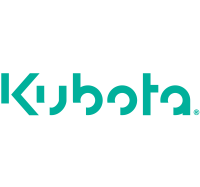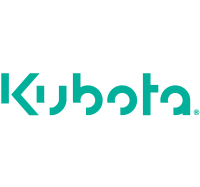
Kubota Corp
TSE:6326


| US |

|
Johnson & Johnson
NYSE:JNJ
|
Pharmaceuticals
|
| US |

|
Berkshire Hathaway Inc
NYSE:BRK.A
|
Financial Services
|
| US |

|
Bank of America Corp
NYSE:BAC
|
Banking
|
| US |

|
Mastercard Inc
NYSE:MA
|
Technology
|
| US |

|
UnitedHealth Group Inc
NYSE:UNH
|
Health Care
|
| US |

|
Exxon Mobil Corp
NYSE:XOM
|
Energy
|
| US |

|
Pfizer Inc
NYSE:PFE
|
Pharmaceuticals
|
| US |

|
Palantir Technologies Inc
NYSE:PLTR
|
Technology
|
| US |

|
Nike Inc
NYSE:NKE
|
Textiles, Apparel & Luxury Goods
|
| US |

|
Visa Inc
NYSE:V
|
Technology
|
| CN |

|
Alibaba Group Holding Ltd
NYSE:BABA
|
Retail
|
| US |

|
3M Co
NYSE:MMM
|
Industrial Conglomerates
|
| US |

|
JPMorgan Chase & Co
NYSE:JPM
|
Banking
|
| US |

|
Coca-Cola Co
NYSE:KO
|
Beverages
|
| US |

|
Walmart Inc
NYSE:WMT
|
Retail
|
| US |

|
Verizon Communications Inc
NYSE:VZ
|
Telecommunication
|
Utilize notes to systematically review your investment decisions. By reflecting on past outcomes, you can discern effective strategies and identify those that underperformed. This continuous feedback loop enables you to adapt and refine your approach, optimizing for future success.
Each note serves as a learning point, offering insights into your decision-making processes. Over time, you'll accumulate a personalized database of knowledge, enhancing your ability to make informed decisions quickly and effectively.
With a comprehensive record of your investment history at your fingertips, you can compare current opportunities against past experiences. This not only bolsters your confidence but also ensures that each decision is grounded in a well-documented rationale.
Do you really want to delete this note?
This action cannot be undone.

| 52 Week Range |
1 730.5
2 558
|
| Price Target |
|
We'll email you a reminder when the closing price reaches JPY.
Choose the stock you wish to monitor with a price alert.

|
Johnson & Johnson
NYSE:JNJ
|
US |

|
Berkshire Hathaway Inc
NYSE:BRK.A
|
US |

|
Bank of America Corp
NYSE:BAC
|
US |

|
Mastercard Inc
NYSE:MA
|
US |

|
UnitedHealth Group Inc
NYSE:UNH
|
US |

|
Exxon Mobil Corp
NYSE:XOM
|
US |

|
Pfizer Inc
NYSE:PFE
|
US |

|
Palantir Technologies Inc
NYSE:PLTR
|
US |

|
Nike Inc
NYSE:NKE
|
US |

|
Visa Inc
NYSE:V
|
US |

|
Alibaba Group Holding Ltd
NYSE:BABA
|
CN |

|
3M Co
NYSE:MMM
|
US |

|
JPMorgan Chase & Co
NYSE:JPM
|
US |

|
Coca-Cola Co
NYSE:KO
|
US |

|
Walmart Inc
NYSE:WMT
|
US |

|
Verizon Communications Inc
NYSE:VZ
|
US |
This alert will be permanently deleted.
 Kubota Corp
Kubota Corp
 Kubota Corp
Current Portion of Long-Term Debt
Kubota Corp
Current Portion of Long-Term Debt
Kubota Corp
Current Portion of Long-Term Debt Peer Comparison
Competitors Analysis
Latest Figures & CAGR of Competitors

| Company | Current Portion of Long-Term Debt | CAGR 3Y | CAGR 5Y | CAGR 10Y | ||
|---|---|---|---|---|---|---|

|
Kubota Corp
TSE:6326
|
Current Portion of Long-Term Debt
¥838.7B
|
CAGR 3-Years
28%
|
CAGR 5-Years
21%
|
CAGR 10-Years
27%
|
|

|
Iseki&Co Ltd
TSE:6310
|
Current Portion of Long-Term Debt
¥9.4B
|
CAGR 3-Years
14%
|
CAGR 5-Years
-2%
|
CAGR 10-Years
5%
|
|
|
Y
|
Yamabiko Corp
TSE:6250
|
Current Portion of Long-Term Debt
¥203m
|
CAGR 3-Years
-45%
|
CAGR 5-Years
-41%
|
CAGR 10-Years
-22%
|
|
|
M
|
Maruyama MFG Co Inc
TSE:6316
|
Current Portion of Long-Term Debt
¥79m
|
CAGR 3-Years
-71%
|
CAGR 5-Years
-32%
|
CAGR 10-Years
-19%
|
|

|
Takakita Co Ltd
TSE:6325
|
Current Portion of Long-Term Debt
N/A
|
CAGR 3-Years
N/A
|
CAGR 5-Years
N/A
|
CAGR 10-Years
N/A
|
|
Kubota Corp
Glance View
Kubota Corp., a titan in the realm of agricultural machinery, began its journey in Osaka, Japan in 1890. From its humble origins as a foundry making castings and pipes, Kubota has grown into an influential global player, primarily through its keen attentiveness to the needs of the agrarian community. Over the decades, Kubota has consistently proven its prowess in manufacturing agricultural machinery, construction equipment, and engines. This diversification drives its revenue streams and fortifies its position in the market. The company’s commitment to innovation is palpable, as it brings state-of-the-art technology to the fields, ensuring farmers across the globe benefit from its efficient and reliable machinery that boosts production while reducing labor. Today, Kubota's operations are not confined to just manufacturing and selling tractors and industrial equipment. The firm's expansive portfolio includes products such as rice transplanters, combine harvesters, and compact construction equipment, which are vital in tackling the challenges of modern agriculture and urbanization. Moreover, by embedding a strong after-sales service strategy and establishing a network of dealers and service outlets worldwide, Kubota ensures customer loyalty and satisfaction. This holistic approach to its business model not only consolidates its earnings but also reinforces its brand prestige, reflecting a synergy of tradition and modernity deeply resonant with its global clientele.

See Also
What is Kubota Corp's Current Portion of Long-Term Debt?
Current Portion of Long-Term Debt
838.7B
JPY
Based on the financial report for Sep 30, 2024, Kubota Corp's Current Portion of Long-Term Debt amounts to 838.7B JPY.
What is Kubota Corp's Current Portion of Long-Term Debt growth rate?
Current Portion of Long-Term Debt CAGR 10Y
27%
Over the last year, the Current Portion of Long-Term Debt growth was 34%. The average annual Current Portion of Long-Term Debt growth rates for Kubota Corp have been 28% over the past three years , 21% over the past five years , and 27% over the past ten years .






























 You don't have any saved screeners yet
You don't have any saved screeners yet